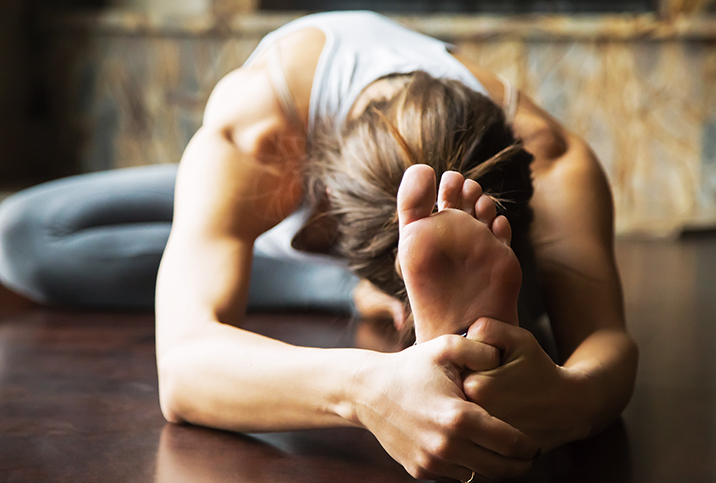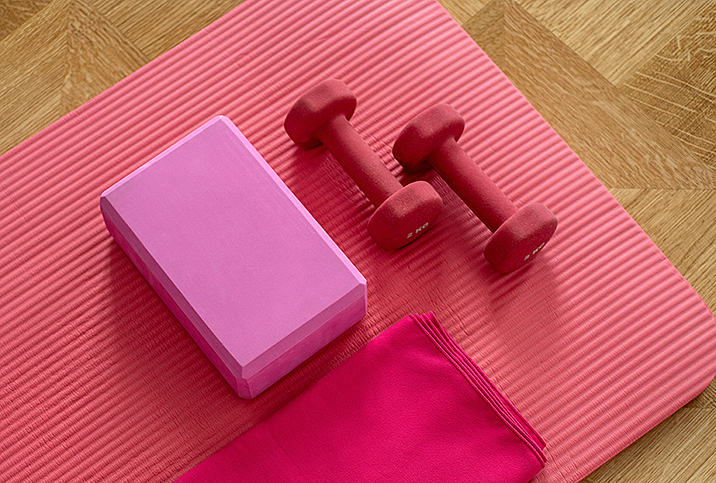Why You Should Make Time to Stretch Every Day

Young or old, most of us have had a "creaky day" with popping joints and tense muscles. While regular stretching can't cure all, it does significantly alleviate muscle and joint pain, reduce risk of injury and provide a whole host of other benefits.
Muscle basics
Muscles are soft tissues that contract and relax to provide the force on our bones that enables us to move. There are almost 650 muscles in the human body. When they get tight—from a hard workout, stress, odd body positioning or inactivity—they become significantly less limber. And it's not just muscles that seize up; the fascia, a thin layer of connective tissue around muscles and muscle groups, can also get tight and make trouble.
Causes of muscle tightness can include limited physical activity, overuse or trauma, and certain medical conditions, such as dystonia, fibromyalgia, lupus, Lyme disease, Parkinson's disease and certain infections. Medications such as statins can also contribute to tightness, as can dehydration and a lack of stretching.
The benefits of daily stretching
Tight muscles create a plethora of problems: a reduced range of motion, soreness, strains, muscle damage, stiffness, joint malalignment, joint pain and reduced performance. Over time, tight fascia can become rigid and cause serious problems. These include a significant decrease in range of motion, nerve impingement or compression, or development of scar tissue.
With age, muscles, fascias and joints naturally become stiffer, causing up to 50 percent loss in flexibility and range of motion; that is, unless you keep them as loose as possible. Engaging in stretching warms up and elongates the fascia around your muscles, making it more pliable and elastic. This, in turn, allows your muscles and joints to move more freely.
Stretching also improves circulation and increases blood flow to your muscles, helping you perform better, recover faster and experience less soreness. It improves posture, decreases back pain, reduces the risk of injury, lowers stress and muscle tension, and prepares you for exercise. Stretching can also improve balance and decrease the risk of falling, which becomes increasingly important as we grow older.
Getting the most out of stretching
Studies have shown daily stretching is ideal, but even doing it two to three times a week can significantly improve flexibility and provide the other benefits discussed. This isn't something to do only before and/or after a workout, although that's important, too.
Dynamic stretching should be incorporated into warmups; static stretching is for cooldowns and can also be performed throughout the day. Find a time to stretch that works well for you, like while you watch your favorite show after dinner or for 15 minutes before bed.
Don't do the same routine every day. Repetition can cause overuse injury, and it also means you're neglecting other muscles and fascias. Change it up to keep things interesting and use your entire body.
Also, focus on counterbalancing. For example, if you work abs and chest one day, be sure to involve your back the next. Quads should be balanced by a hamstring and glute workout. As a basic routine, try to include at least one stretch for each muscle group: chest, delts, triceps, back, adductors, abs, hip flexors, quads, hamstrings, glutes and calves. You might not do all of these every day, but hamstrings, hip flexors and shoulders are good ones to try to squeeze into your daily routine.
Don't neglect to warm up with walking or gentle movement for five minutes or so. Once you're ready to begin, 15 to 20 seconds per stretch is good, and repeat for three to four reps for a total of one minute per stretch. Studies show this method obtains optimal results. Breathe deeply with each stretch (in through your nose, out through your mouth) and try to relax your entire body. Don't bounce—ballistic stretching is difficult to do safely without a trainer and can increase the risk for injury. And never stretch to the point of extreme discomfort or pain or you'll run the risk of pulling something or otherwise causing damage.
Within weeks of this new routine, you should see significant improvement in flexibility and balance, reduced muscle and joint pain, improved performance and more. Keep at it and you'll create a lifelong habit that will keep your body happy into your later years.


















